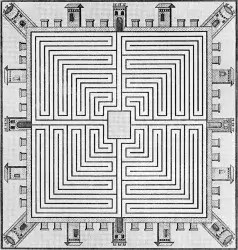Time, said St. Augustine, is a three-fold present: the present as we experience it, the past as a present memory, and the future as a present expectation. By that criterion, the world of the year 2000 has already arrived, for in the decisions we make now, in the way we design our environment and thus sketch the lines of constraints, the future is committed. Just as the gridiron pattern of city streets in the nineteenth century shaped the linear growth of cities in the twentieth, so the new networks of radial highways, the location of new towns, the reordering of graduate-school curricula, the decision to create or not to create a computer utility as a single system, and the like will frame the tectonics of the twenty first century. The future is not an overarching leap into the distance; it begins in the present.
This is the premise of the Commission on the Year 2000. It is an effort to indicate now the future consequences of present public policy decisions, to anticipate future problems, and to begin the design of alternative solutions so that our society has more options and can make a moral choice, rather than be constrained, as is so often the case when problems descend upon us unnoticed and demand an immediate response.
—Daniel Bell, “The Year 2000? The Trajectory of an Idea”
Access the full volume here.
Preface
by Stephen R. Graubard
The Year 2000? The Trajectory of an Idea
by Daniel Bell
WORKING SESSION
Preliminary Memorandum to the Commission from the Chairman
Baselines for the Future
Alternative Futures
Centralization and Decentralization
The Need for Models
A Summary by the Chairman
SOME SPECIFIC PROBLEMS
The Next Thirty-Three Years: A Framework for Speculation
by Herman Kahn and Anthony J. Wiener
Can Social Predictions Be Evaluated?
by Fred Charles Ekle
Forecasting and Technological Forecasting
by Donald A. Schon
Information, Rationality, and Free Choice in a Future Democratic Society
by Martin Shubik
Planning and Predicting: Or What to Do When You Don't Know the Names of the Variables
by Leonard J. Duhl
Modernizing Urban Development
by Harvey S. Perloff
The Relationship of Federal to Local Authorities
by Daniel P. Moynihan
The Need for a New Political Theory
by Lawrence K. Frank
University Cities in the Year 2000
by Stephen R. Graubard
Educational and Scientific Institutions
by Harold Orlans
Biological Man and the Year 2000
by Ernst Mayr
Deliberate Efforts to Control Human Behavior and Modify Personality
by Gardner C. Quarton
Religion, Mysticism, and the Institutional Church
by Krister Stendahl
Memorandum on Youth
by Erik H. Erikson
The Life Cycle and Its Variations: The Division of Roles
by Margaret Mead
The Problems of Privacy in the Year 2000
by Harry Kalven, Jr.
Some Psychological Perspectives on the Year 2000
by George A. Miller
Notes on Meritocracy
by David Riesman
Communication
by John R. Pierce
Thinking About the Future of International Society
by Eugene V. Rostow
Political Development and the Decline of the American System of World Order
by Samuel P. Huntington
The International System in the Next Half Century
by Ithiel de Sola Pool
WORKING SESSION II
The Nature and Limitations of Forecasting
Four Futures
The Need for Normative Statements
A Summary by the Chairman
Members of the Commission on the Year 2000
The Working Parties
Coda: Work in Further Progress
by Daniel Bell
Notes on Contributors

